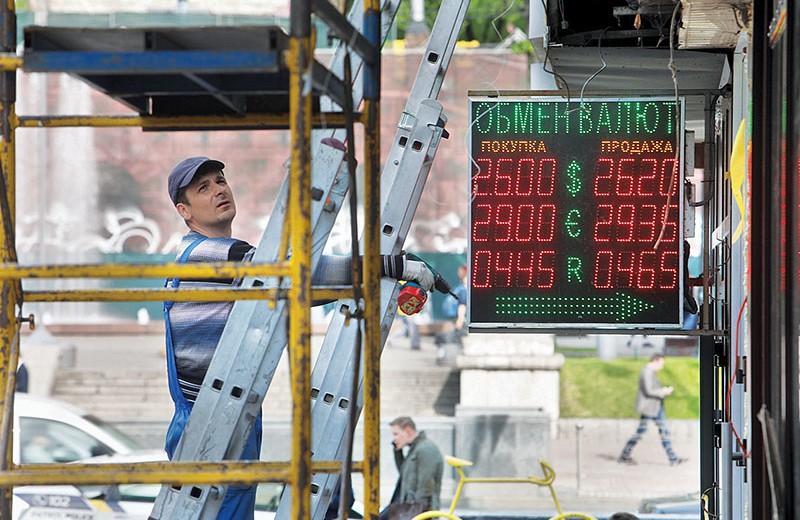Two major international lenders see 2017 as the time to start building a hryvnia capital market.
The European Bank for Reconstruction and Development is planning to conduct a hryvnia bond issue in Ukraine, according to its regional director Francis Malige.
“We’re working on seeing if we have enough interested clients so that we can actually go ahead and issue on the market,” he said.
At the same time, the World Bank’s International Finance Corporation issued its first-ever hryvnia denominated loan on June 7, to Auchan Retail’s Ukraine division, saying that hryvnia financing is “vital to modernize the economy and to support growth.”
The moves come as many in Ukraine’s banking sector seek ways to spark lending that could also develop the country’s small-to-medium sized business sector, which continues to face stagnation amid a drought of accessible financing.
“There’s a lot of companies in this country that basically sell domestically, and they shouldn’t be borrowing dollars because they do not have a natural FX (foreign-exchange) protection or hedge,” said Steven Fisher, the head of Citibank Ukraine. “They should be issuing, and the sad thing is… there’s not a lot going on. This is an area that critically needs to be developed.”
Gauging demand
The EBRD’s plan would see it borrow hryvnia on the Ukrainian market in order to finance more loans in the currency.
The first issuance would likely be relatively small — in the order of 20 to 30 million euros. That would allow the EBRD to gauge demand, without “drying up” what’s already a small market.
“This is well overdue,” Malige said, adding that the EBRD issued its first ever Georgian lari-denominated Eurobond in April.
The International Finance Corporation, a World Bank-owned international lender, called the Auchan loan a “landmark transaction,” according to IFC regional head for Ukraine and Belarus Jason Pellmar. In a statement, Pellmar said the organization is “now ready to roll out customized, local currency products to Ukrainian clients in various sectors and to extend the maturities of hryvnia financing.”
Fisher said that demand for these kinds of instruments would be more likely to come from companies selling their products within Ukraine.
“The strongest borrowers in this country are usually exporters, and they don’t need hryvnias that much — they prefer to borrow dollars,” Fisher said. “If you’re an exporter with a natural currency hedge, you’ll instinctively want to borrow dollars.”
Parliament passed a law in July 2013 that paved the way for international lenders to borrow money in hryvnia.
Global map
The plan has been kicking around Ukraine’s financial sector for more than 10 years, but has never managed to gain traction.
Fisher said that the EBRD’s triple A credit rating presented it with a conundrum: the bank would want to issue the bonds at an interest rate reflective of their high rating.
“Local investors may not be interested in that, because they’re seeing that, ‘I have my hryvnia, I’m happy investing hryvnias into Ukrainian government paper, so why should I accept a lower yield than that? Triple A or no triple A.’”
Malige said that the bank intends to start small and short, with a limited value to the issuance for only one year in the first round, before moving on to longer term debt instruments.
“It’s another way we help our countries to put themselves on the global map,” he added.



